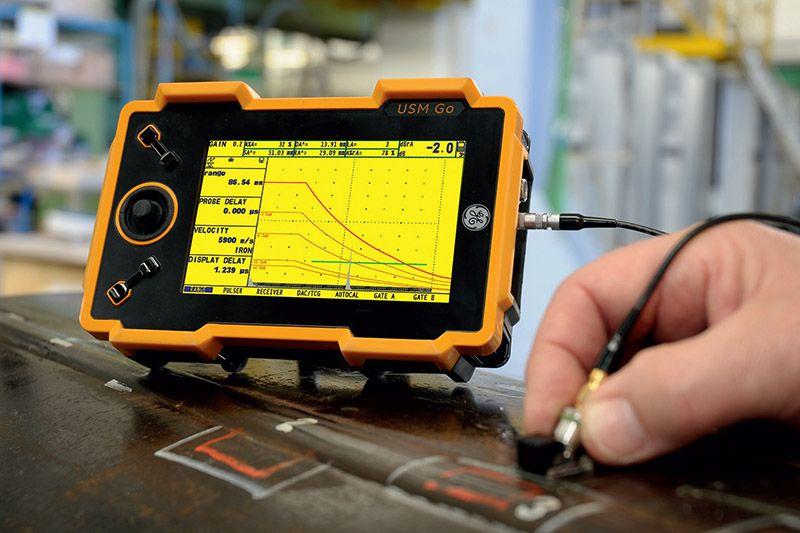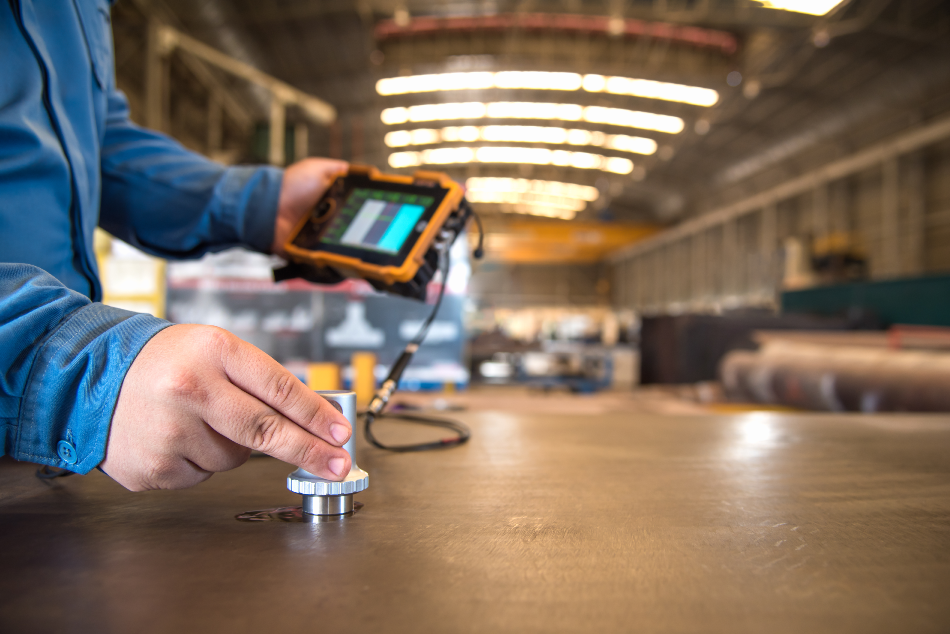In the world of industrial quality assurance, understanding the intricacies of ultrasonic frequency tuning is essential. This guide will provide insights into how to effectively tune ultrasonic frequencies to achieve precise results, a skill highly valuable for professionals in the industry.

What is Ultrasonic Frequency Tuning?
Ultrasonic frequency tuning involves adjusting the frequency of ultrasonic waves to enhance the accuracy and efficiency of inspections. This process is crucial in detecting flaws and ensuring the quality of materials and products. By fine-tuning the frequency, professionals can better identify imperfections that might not be visible to the naked eye.
The Importance of Frequency Calibration
Calibration is a fundamental step in the tuning process. It ensures that the ultrasonic devices are set to the correct frequencies, providing reliable and repeatable results. Regular calibration helps maintain the integrity of the inspection process and supports continuous quality improvement.
How Ultrasonic Frequency Works
Ultrasonic frequencies are sound waves that operate above the range of human hearing, typically above 20 kHz. These waves are used in various industrial applications to detect flaws, gauge thickness, and even clean materials. By adjusting the frequency, professionals can target specific types of materials and defects more effectively.
Using Ultrasonic Frequencies for Flaw Detection
One of the primary uses of ultrasonic frequencies is in flaw detection. By selecting the appropriate frequency, inspectors can enhance the detection of cracks, voids, and inclusions within a material. This capability is especially crucial in industries where safety and reliability are paramount.
Steps to Tune Ultrasonic Frequencies
Understanding Material Properties
The first step in tuning ultrasonic frequencies is understanding the material properties. Different materials respond differently to ultrasonic waves. Knowing the material’s density, elasticity, and acoustic impedance helps in selecting the right frequency.
Choosing the Right Equipment
Using the proper equipment is essential in frequency tuning. High-quality ultrasonic devices with adjustable frequencies provide greater flexibility and accuracy in inspections. Choosing the right equipment can significantly impact the results of the inspection process.
Setting Initial Frequency
The initial frequency setting is crucial. Start by setting a baseline frequency that is known to work well with similar materials. From there, adjustments can be made to fine-tune the device for the specific inspection needs.
Conducting Test Runs
After setting the initial frequency, conduct test runs to assess the effectiveness of the tuning. These tests help identify any necessary adjustments and ensure that the frequency is optimized for the inspection.
Benefits of Ultrasonic Frequency Tuning
Ultrasonic frequency tuning offers numerous benefits, including improved accuracy, increased efficiency, and enhanced defect detection capabilities. By optimizing the frequency, professionals can achieve more reliable results and reduce the likelihood of overlooking critical defects.
Improved Accuracy
Accurate frequency tuning ensures that ultrasonic waves penetrate materials effectively, providing more precise data on the material’s condition. This accuracy is vital for making informed decisions about the material’s quality and safety.
Increased Efficiency
By optimizing the frequency, inspections can be completed more quickly and with less effort. This efficiency not only saves time but also reduces costs associated with extensive inspections and rework.
Enhanced Defect Detection
The ability to detect smaller and more subtle defects is a key advantage of ultrasonic frequency tuning. By fine-tuning the frequency, professionals can identify issues that might otherwise go unnoticed, ensuring higher product quality and safety.
Challenges in Ultrasonic Frequency Tuning
Despite its benefits, ultrasonic frequency tuning presents some challenges. These include the need for specialized knowledge, the complexity of adjusting frequencies for different materials, and the potential for human error during the tuning process.
Specialized Knowledge Required
Effective tuning requires a deep understanding of ultrasonic technology and the specific materials being inspected. Professionals must be well-versed in both the theoretical and practical aspects of frequency tuning.
Complexity of Adjustments
Adjusting frequencies can be complex, especially when dealing with a variety of materials and defects. It requires careful consideration of multiple factors, including material properties, inspection objectives, and equipment capabilities.
Potential for Human Error
Human error is always a possibility in any inspection process. Ensuring that personnel are adequately trained and that procedures are followed meticulously can help mitigate this risk.
Best Practices for Ultrasonic Frequency Tuning
To overcome these challenges and maximize the benefits of ultrasonic frequency tuning, professionals should adhere to best practices. These include conducting regular training, using advanced equipment, and maintaining a systematic approach to inspections.
Regular Training
Continuous training ensures that personnel stay updated with the latest advancements in ultrasonic technology and techniques. This training is crucial for maintaining the effectiveness and reliability of the inspection process.
Advanced Equipment
Investing in advanced ultrasonic equipment with features like automatic frequency adjustment and digital interfaces can simplify the tuning process and improve inspection outcomes.
Systematic Approach
Following a systematic approach to inspections, including detailed documentation and consistent procedures, helps ensure that tuning is performed accurately and efficiently.
Conclusion
Ultrasonic frequency tuning is a vital skill for industry QA professionals. By understanding and implementing the principles outlined in this guide, professionals can enhance their inspection processes, achieve more accurate results, and ensure the highest standards of quality and safety in their operations.

FAQs
What is the role of frequency in ultrasonic inspections?
Frequency plays a crucial role in ultrasonic inspections by determining the depth of penetration and resolution of the ultrasonic waves. The right frequency ensures effective flaw detection and material evaluation.
How often should ultrasonic equipment be calibrated?
Ultrasonic equipment should be calibrated regularly, ideally before each inspection session, to ensure accuracy and reliability. Regular calibration helps maintain the integrity of the inspection process.
What are common challenges in ultrasonic frequency tuning?
Common challenges include the need for specialized knowledge, the complexity of frequency adjustments for different materials, and the risk of human error during the tuning process.
This article contains affiliate links. We may earn a commission at no extra cost to you.
